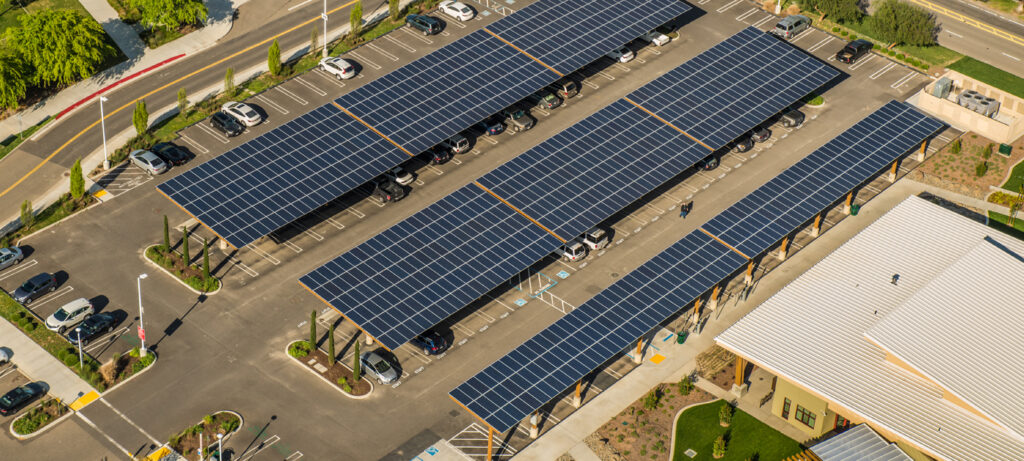Pacific Gas & Electric (PG&E) is rolling out a new lineup of commercial and industrial (C&I) rate schedules next month: the “B rates”. These new rates were previously approved by the California Public Utilities Commission (CPUC) during PG&E’s most recent General Rate Case (GRC) cycle and will be going into effect starting on November 1.
PG&E’s new B rates are significantly different than the current legacy C&I rates that are effective today. The most notable change is that PG&E’s new B rates shift the on-peak time-of-use (TOU) period until much later in the evening: 4 pm to 9 pm. The current summer season on-peak had been defined from noon to 6 pm. Additionally, this new on-peak window will be applied year-round for both the winter and summer and in effect all 7-days of the week. Both of these are significant departures from PG&E’s current C&I rate structures. Furthermore, the new rates will restructure how the winter and summer seasons are defined, moving to a 4-month summer. All this comes on top of the fact that PG&E is changing the naming conventions that have been in place for over a decade.
PG&E is the last of the big three California Investor-Owned Utilities (IOUs) to implement their rate changes that are a result of their 2017-2019 GRC cycle. San Diego Gas & Electric (SDG&E) implemented most of their C&I rate changes in December of 2018, and Southern California Edison (SCE) followed suit in March 2019.
Key Provisions
- The B rates will become voluntary for existing PG&E C&I customers on 11/1/2019.
- Existing customers, except those qualified for grandfathering, will be mandatorily transitioned to the B rates beginning Nov 2020.
- After 11/1/2019 new PG&E C&I customers will be required to take service on the B rates.
- All B rates will contain a year-round on-peak period of 4pm – 9pm, which will apply 7-days a week.
- In addition, the months of March-May will contain a new 9am – 2pm super off-peak period.
- B rates will feature a 4-month summer season (Jun-Sep) compared to the previous 6-month summer.
- The new Option S rate (on B-19 or B-20) will be the first–time daily demand charges are implemented in California.
- PG&E has renamed their C&I tariffs so that they begin with a “B” instead of an “A” or “E”. For example, A-1 will become B-1 and E-19 will become B-19. The new line-up of rates will include: B-1, B-6, B-10, B-19, and B-20.
What’s the Net Effect?
Compared to PG&E’s current legacy C&I rates, the new B rates will erode the ‘$/kWh value of solar’. This is primarily caused by the shifting of the on-peak TOU period to later in the evening. Given that most solar production occurs midday, moving the peak period from the afternoon (noon to 6 pm) into the evening (4 pm to 9 pm) will effectively revalue the energy that solar offsets. Instead of off-setting premium “on-peak” energy, solar will effectively now be offsetting mid-peak, off-peak, and super-off-peak energy, depending on the season. This results in a decrease in the utility bill savings solar can achieve.
To ease this erosion effect, the CPUC has mandated grandfathering protections for existing solar customers. TOU grandfathering effectively allows eligible customers to remain under the legacy TOU periods for 10 years (we have the full breakdown of grandfathering rules here). Customers will still be subject to any changes in volumetric energy and demand charges made to the grandfathered rates. In other words, the grandfathering protections pertain only to the TOU periods.
In order to determine the exact effect of the new rates for a specific customer, it requires looking at the specific B rate and the legacy rate that it is replacing. In some cases, the new B rate is similar to the legacy rate it is replacing; in other cases, it’s dramatically different. For example, the new B-19 and B-19 Option R rates have very similar energy and demand charges to the outgoing E-19 and E-19 Option R rate. Whereas, the new B-6 rate, which replaces the legacy A-6 rate, incorporates significant volumetric pricing changes, which are in addition to all the summarized key provisions above. The new B-6 dramatically flattens the TOU price differential between the on-peak and off-peak periods. The current A-6 rate (10/1/19 effective date) has a ~$0.35/kWh summer season, on-peak vs off-peak price differential. The delta gets flattened all the way down to ~$0.12/kWh on the new replacement B-6 rate. To precisely determine the change in savings effect for a specific customer under the legacy rate and the new B rate, we encourage users to model each project in Energy Toolbase.
Updates in Energy Toolbase
The ETB Utility Rates Team has created all of the latest illustrative PG&E B rates in our rates database as custom rates. As is customary with illustrative rates that are not yet in effect, our rates team will drop these into your account on a per request basis, simply reach out to your designated account manager or email: utilityraterequest@energytoolbase.com. Come November 1st, our Utility Rates Team will update all of the effective B rates into our database when they are published by PG&E so that they will be readily available to all users.
Our current utility rate infrastructure does not have the ability to accommodate the new daily demand charge “Option S” rates include. It is high on our priority list to accommodate this innovative new rate design structure and we expect to have this functionality within one of our next few software updates. Thank you for your patience. Please feel free to reach out to anyone on the rates team to discuss any of these topics further.
Links
- PG&E Advice Letter, PG&E
- A Guide to Grandfathering Protections for Solar Customers, Energy Toolbase



